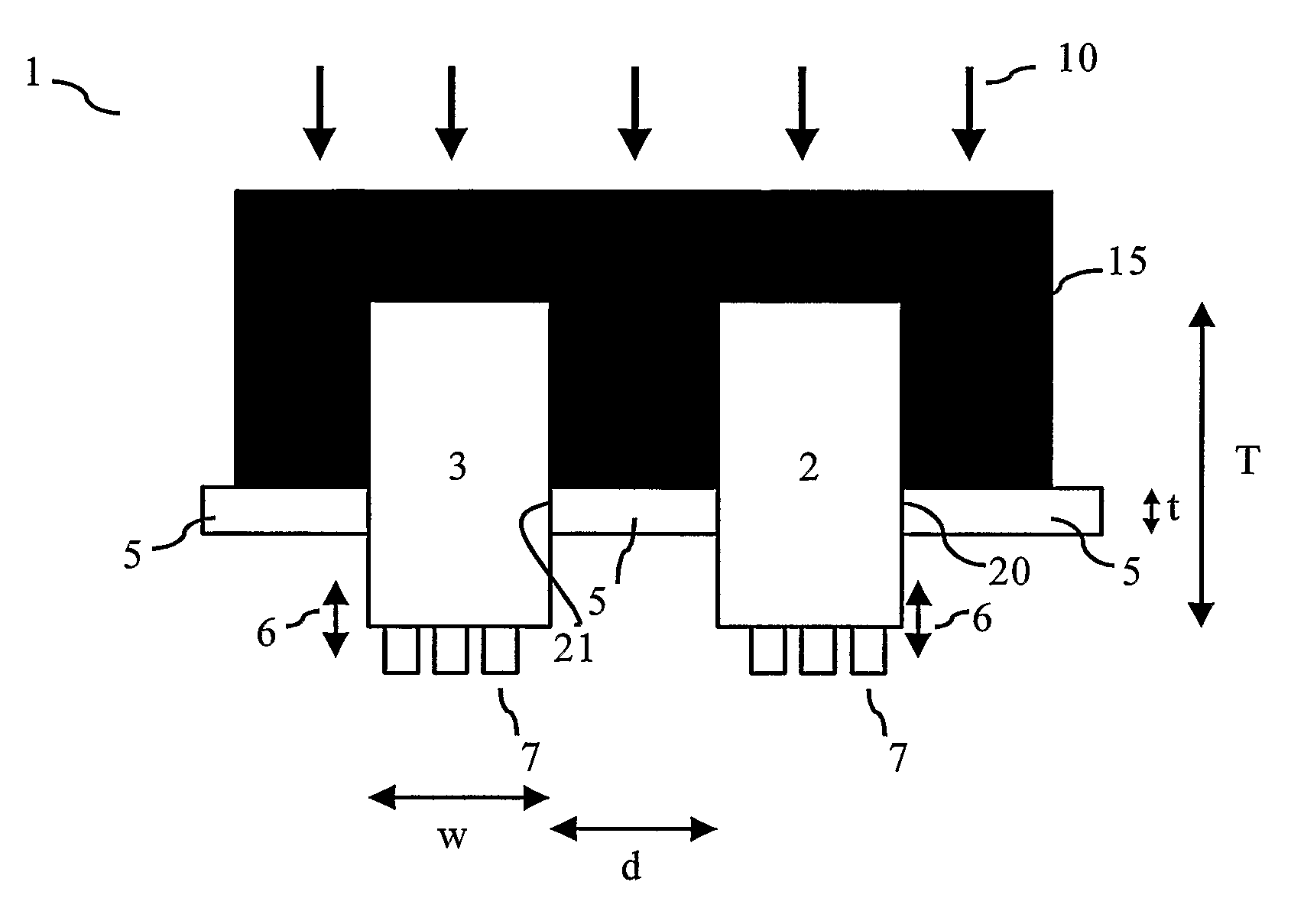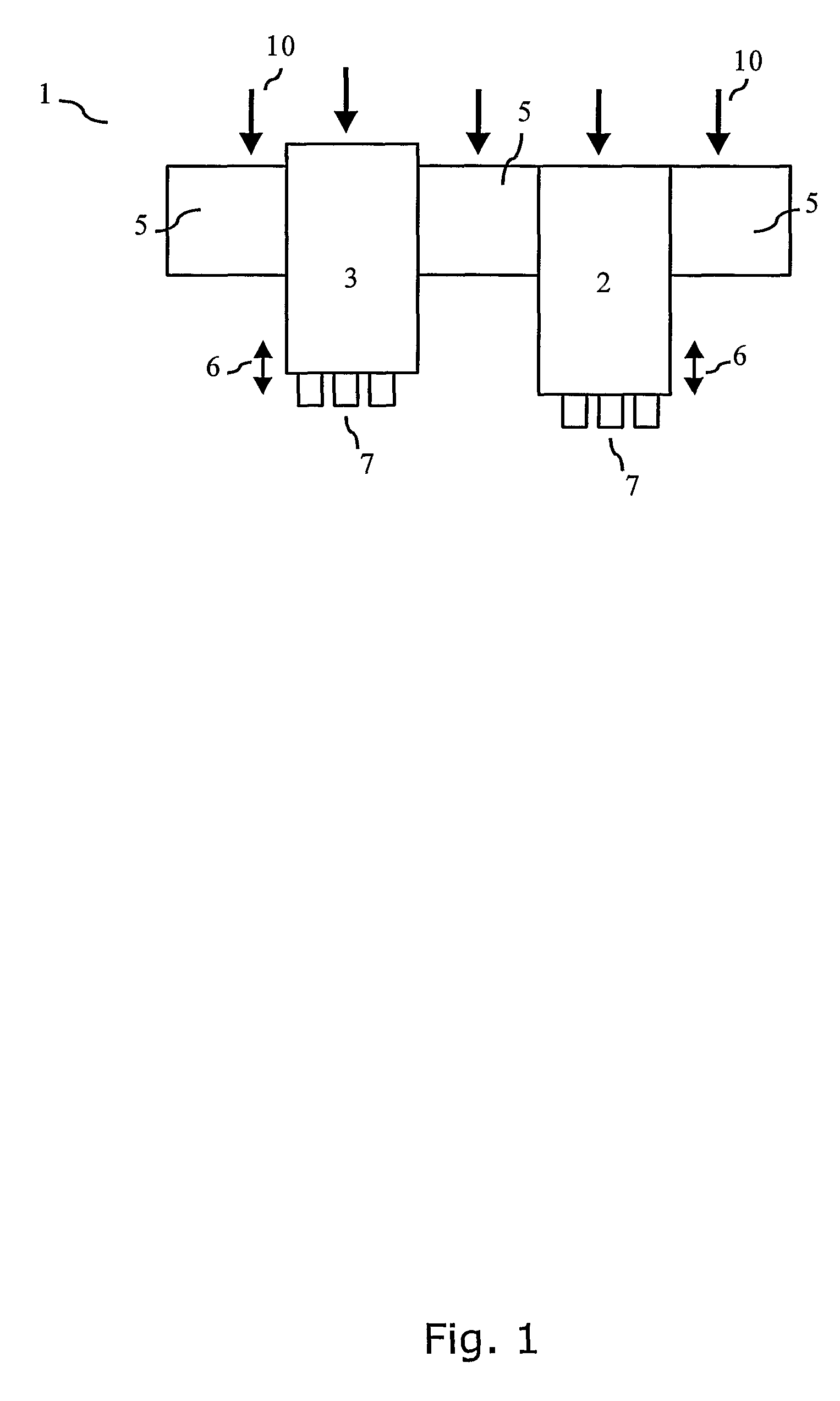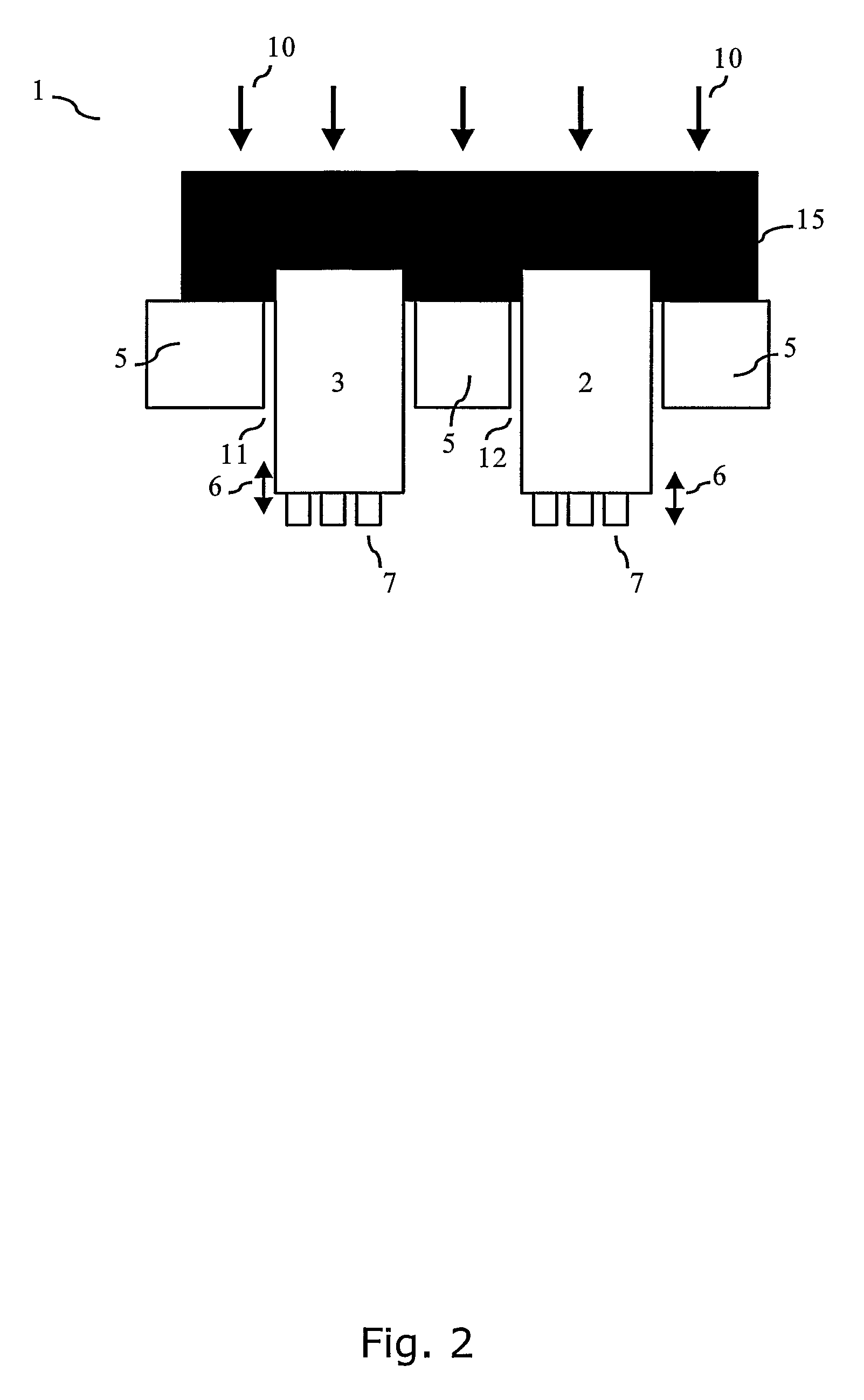Flexible nano-imprint stamp
a nano-imprinting and flexible technology, applied in the field of nano-imprinting stamps, can solve the problems of deformation of the stamp, undesirable stretching or distortion of the lithographic pattern of the stamp, applied pressure on the stamp of plachetka et al. and the flexible stamps, etc., to achieve the effect of alleviating, eliminating or mitigating
- Summary
- Abstract
- Description
- Claims
- Application Information
AI Technical Summary
Benefits of technology
Problems solved by technology
Method used
Image
Examples
first embodiment
[0038]FIG. 1 shows a cross-sectional view of a nano-imprinting stamp 1 according to the invention. The stamp 1 comprises a first imprinting section 2 and a second imprinting section 3. For reasons of clarity only two imprinting sections 1 and 2 are shown in FIGS. 1 to 3. In the embodiment of FIG. 1, the first and second imprinting sections 2 and 3 are mounted in a base part 5 having appropriate holes for receiving the first and second imprinting sections 2 and 3. The first and second imprinting sections 2 and 3 are mounted in the base part 5 so as to enable that an imprinting force, indicated by the arrows 10, may displace the entire stamp 1 downwards as shown in FIG. 1, while the first and second imprinting sections 2 and 3 are independently displaceable in a vertical direction as indicated by the double-headed arrows 6. This is realised by providing an appropriate friction force at the interfaces between the first and second imprinting sections 2 and 3 and the base part 5. Thus, a...
second embodiment
[0039]FIG. 2 shows a cross-sectional view of the nano-imprinting stamp 1 according to the invention. In the embodiment of FIG. 2, the imprinting sections 2 and 3 are received in the corresponding holes 11 and 12 of the base part 5, but there is no direct physical contact between the imprinting sections 2 and 3 and the base part 5. Instead, the upper parts of the imprinting sections 2 and 3 are embedded in a back matrix 15 of an elastomeric material such as PDMS or similar. The back matrix 15 serves the dual purpose of providing a way of transmitting the imprinting force 10 to the imprinting sections 2 and 3 and allowing for the imprinting sections 2 and 3 to be independently displaceable in an imprinting direction of the imprinting stamp 1 as indicated by the arrows 6. The base part 5 serves the purpose of constraining the imprinting sections 2 and 3 in a direction perpendicular to an imprinting direction of the imprinting stamp 1 due to the transversal deformation of the back matri...
third embodiment
[0040]FIG. 3 shows a cross-sectional view of the nano-imprinting stamp 1 according to the invention. In the embodiment shown in FIG. 3, the imprinting sections 2 and 3 are integrated with the base part 5. Thus, at the interfaces 20 and 21 between the first and second imprinting sections 2 and 3 and the base part 5, the first and second imprinting sections 2 and 3 are either bonded, e.g. by adhesive bonding, anodic bonding, fusion bonding, etc., to the base part 5, or alternatively the base part 5 and imprinting sections 2 and 3 can be manufactured in a single piece of material, e.g. a semiconductor material like Si or similar. In this embodiment, the ability of the first and second imprinting sections 2 and 3 to be independently displaceable in a direction substantially parallel to an imprinting direction of the imprinting stamp 1 is assured by an appropriate design of the magnitude of the thickness t of the base part 5 relative to the thickness T of the imprinting sections 2 and 3 ...
PUM
| Property | Measurement | Unit |
|---|---|---|
| displacements | aaaaa | aaaaa |
| displacements | aaaaa | aaaaa |
| displacements | aaaaa | aaaaa |
Abstract
Description
Claims
Application Information
 Login to View More
Login to View More - R&D
- Intellectual Property
- Life Sciences
- Materials
- Tech Scout
- Unparalleled Data Quality
- Higher Quality Content
- 60% Fewer Hallucinations
Browse by: Latest US Patents, China's latest patents, Technical Efficacy Thesaurus, Application Domain, Technology Topic, Popular Technical Reports.
© 2025 PatSnap. All rights reserved.Legal|Privacy policy|Modern Slavery Act Transparency Statement|Sitemap|About US| Contact US: help@patsnap.com



